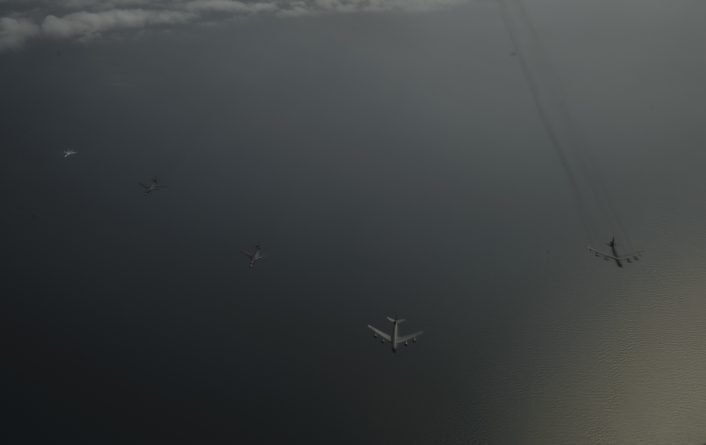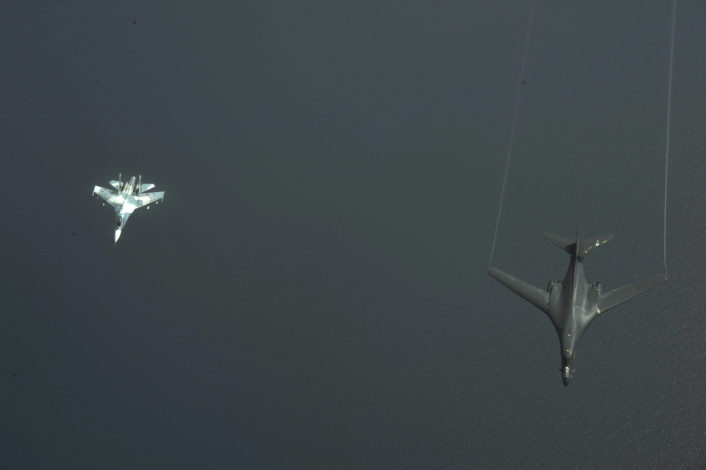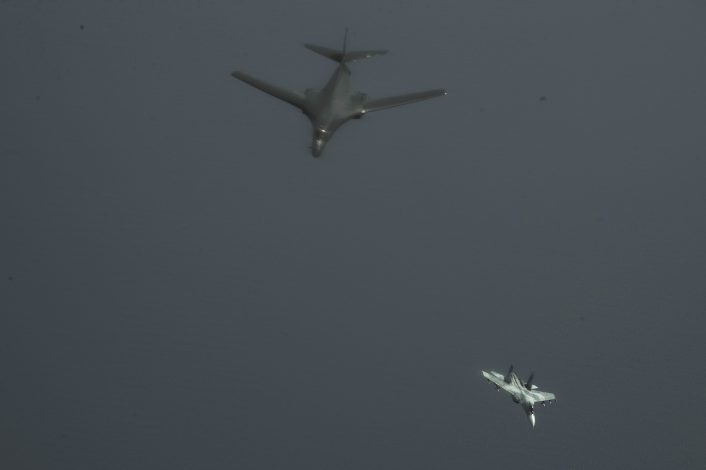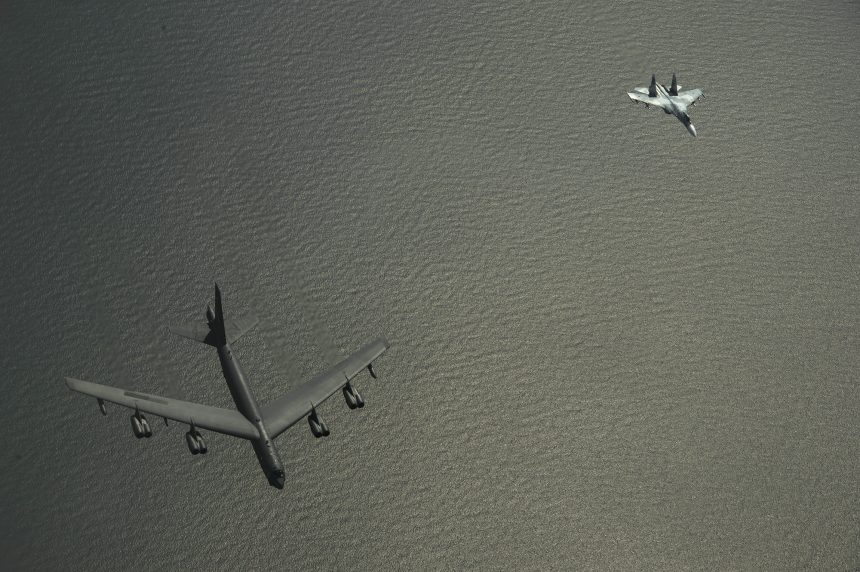Here are some extraordinary pictures of a really unsual “close encounter” over the Baltic Sea.
In yet another sensational encounter between U.S. and Russian aircraft, two B-1B Lancers from the 28th Bomb Wing, a B-52H Stratofortress from the 2nd Bomb Wing (both deployed to RAF Fairford, UK) and a KC-135R Stratotanker aerial refueling aircraft from the 459th Air Refueling Squadron were intercepted and observed by a Russian SU-27 Flanker on Friday, June 9 over the Baltic Sea.
The U.S. bomber and tanker formation was participating in BALTOPS, an aerial deployment exercise that rehearses and improves cooperation and interoperability between U.S. and international units and as a demonstration of U.S. capabilities in the region to reinforce the U.S. commitment to security.
U.S. Air Force photographer Staff Sgt. Jonathan Snyder shot these photos (from the boom position of a KC-135 tanker) during the Friday intercept. The U.S. Air Force said officially that, “Flight intercepts are regular occurrences, and the vast majority are conducted in a safe and professional manner.”
However the list of intercepts deemed “unsafe” or “unprofessional” from the U.S. DoD is pretty long… (read here or here for a couple of examples.)

There has been an increase in intercepts between NATO, U.S. and Russian aircraft during the last 24 months in what seems like a slightly less-tense return to the Cold War era when intercepts had a distinctly more ominous message. The U.K. based news writer Lizzie Dearden wrote, “Around 780 deployments were made from European military bases last year in response to Russian aircraft, compared to just 410 in 2015.” This does not a string of intercepts in other regions that include a sensational set of four intercepts in a row by USAF F-22 Raptors of Russian maritime patrol aircraft off the Alaskan coast recently.

While popular news media often adds a sensational spin to the intercepts suggesting some version of political brinkmanship a more relevant interpretation is that the air forces involved are conducting the intercepts for training and air traffic safety reasons. Some NATO aircraft including RAF Typhoons have escorted Russian aircraft that flew in moderate proximity to commonly used civilian air routes without common air traffic control transponders. When NATO aircraft rendezvous with the Russian aircraft they use their transponders to mark the location of the Russian aircraft as they transit the airspace.
Regardless of the motives the encounters often make for sensational photos and video.










